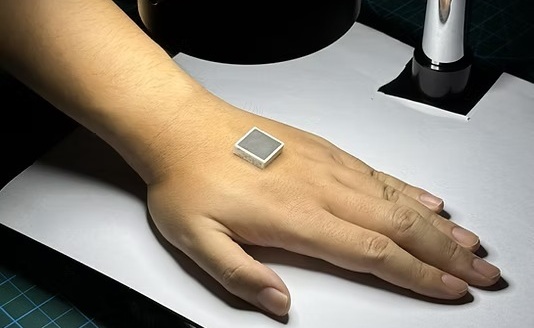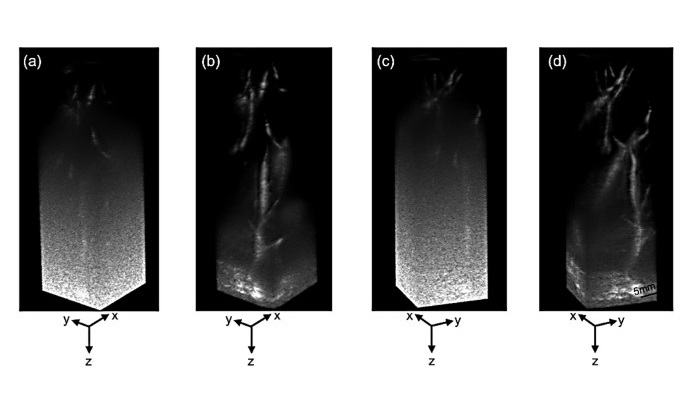Ultrasound-Based Microscopy Technique to Help Diagnose Small Vessel Diseases
Posted on 07 Apr 2025
Clinical ultrasound, commonly used in pregnancy scans, provides real-time images of body structures. It is one of the most widely used imaging techniques in medicine, but until recently, it had little application in imaging microscopic structures such as individual cells. Ultrasound can penetrate several centimeters into opaque mammalian tissue, offering non-invasive imaging of whole organs. This allows for the observation of cellular behavior in its natural environment, something that light-based methods struggle to achieve in larger living tissues. Now, scientists have successfully used ultrasound to image specifically labeled cells in three dimensions, marking the first time living cells inside whole organs were imaged across volumes the size of a sugar cube.
This was achieved by using a new ultrasound technique, called nonlinear sound sheet microscopy, by a team of scientists from Delft University of Technology (Delft, Netherlands), along with collaborators at California Institute of Technology (Caltech, Pasadena, CA, USA). Light sheet microscopy, currently the leading technology for imaging living cells in 3D—such as during embryo development—has its limitations, as it can only be used on translucent or thin specimens, with light unable to penetrate more than 1 mm into opaque tissue. The breakthrough in ultrasound imaging was facilitated by the discovery of a sound-reflecting probe in the Shapiro Lab at Caltech. This probe consists of nanoscale, gas-filled vesicles that illuminate in ultrasound images, allowing cells to become visible. These vesicles have a protein shell, and their brightness can be adjusted by engineering their composition. The team used these gas vesicles to track cancer cells in their study.

In addition to tracking individual cells, the researchers utilized ultrasound in combination with microbubbles as probes circulating in the bloodstream to detect brain capillaries. To their knowledge, nonlinear sound sheet microscopy is the first technique that can observe capillaries in living brains. This breakthrough has significant potential for diagnosing small vessel diseases in patients. Since microbubble probes are already approved for clinical use, this technique could be implemented in hospitals within a few years. Beyond its clinical applications, the researchers believe that sound-sheet microscopy will have a major impact on biological research, particularly in the development of new cancer treatments.
“Our imaging technique can distinguish healthy versus cancer tissue,” said lead researcher David Maresca. “Furthermore, it can visualize the necrotic core of a tumor; the center of the tumor where cells start dying due to a lack of oxygen. Thus, it could assist in monitoring the progression of cancer and the response to treatment.”
Related Links:
Delft University of Technology
Caltech










 Guided Devices.jpg)



